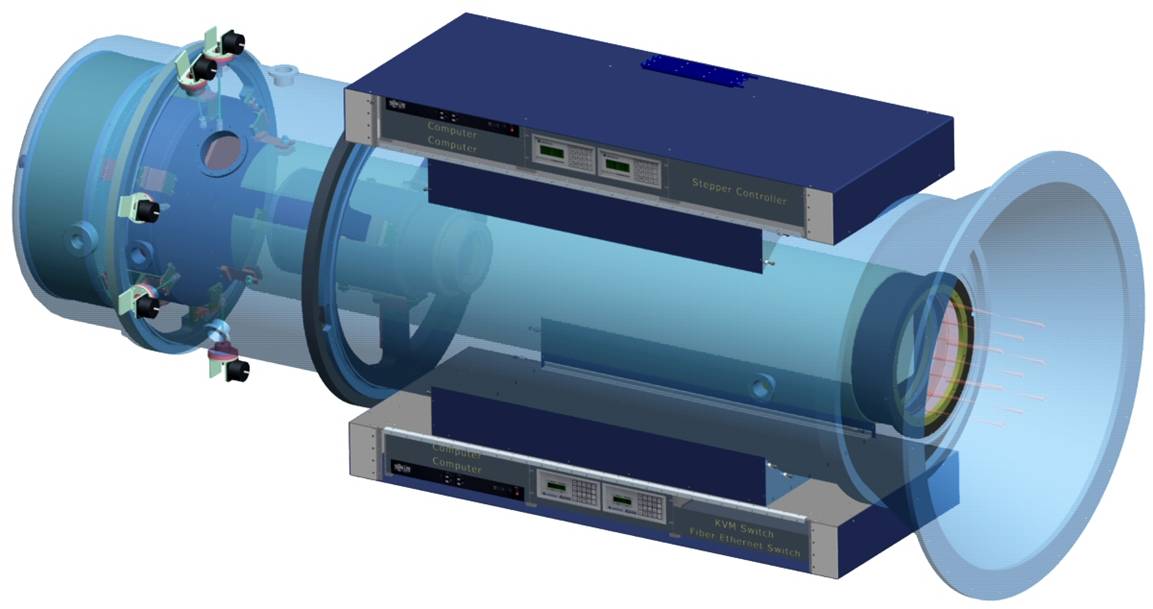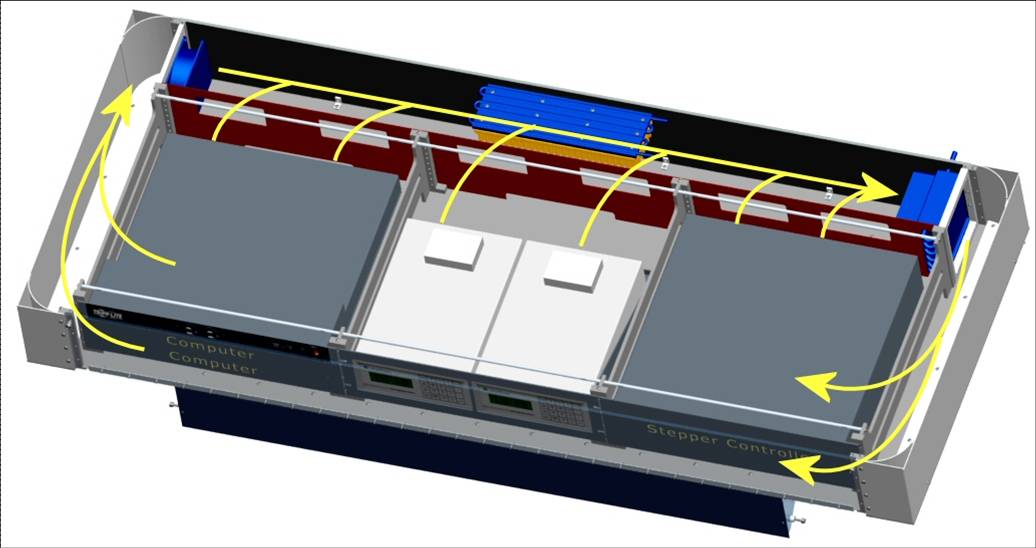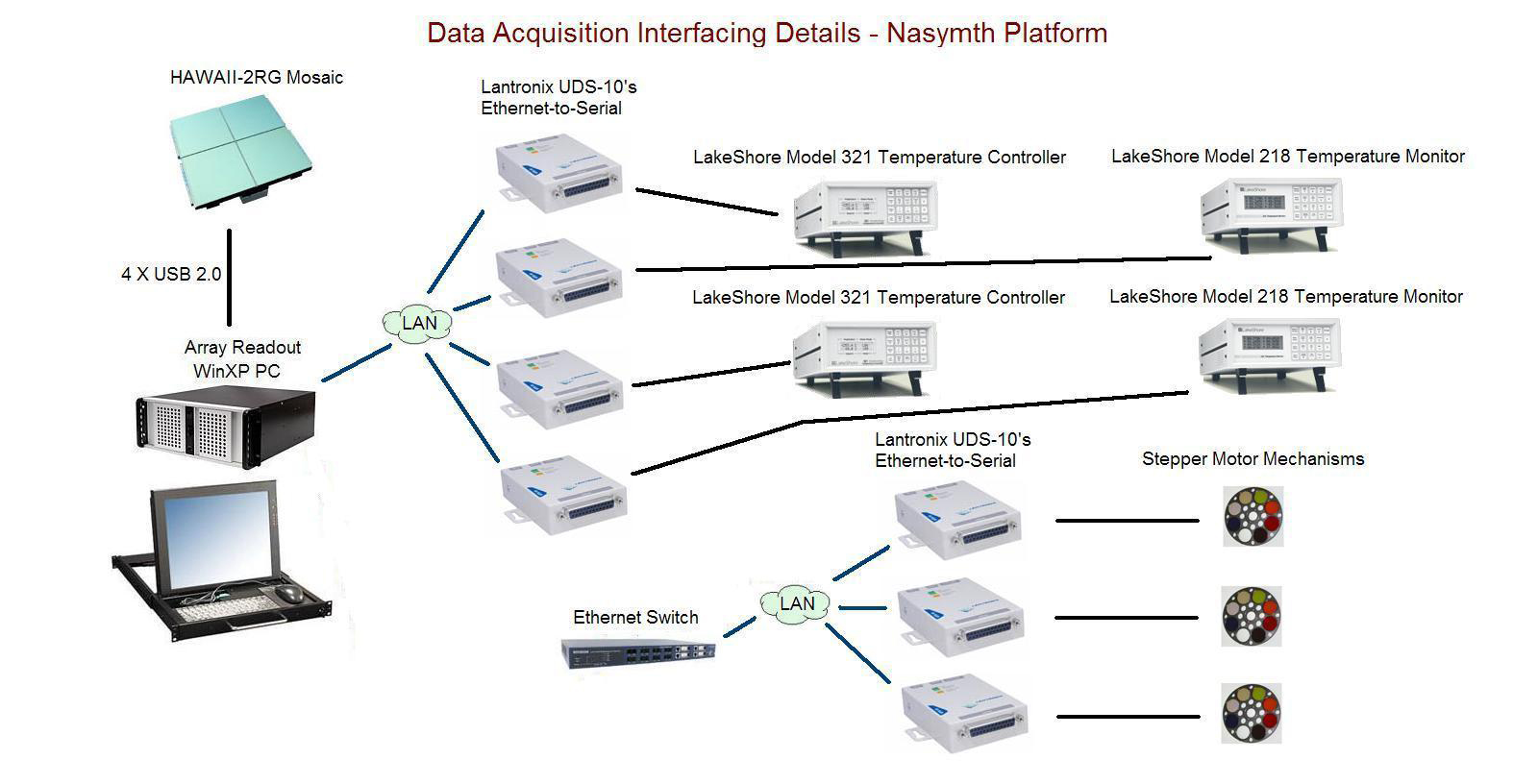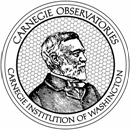
- Home
- Quick Facts
- Exposure Calculator
- Calibration
- Manual & Documents
- About Us
- Optics
- Mechanical
- Electronics
- Software
- Pictures
- Calendar
- Status
Technical Staff Links
Four Star Electronics and Data SystemIn stark contrast to the proceeding generation of infrared cameras, the required external electronic support for Four Star is minimal. Rockwell has supplied application specific integrated circuits (ASIC's) which are deployed at liquid nitrogen temperature inside the cryogenic dewar. All array biasing, clocking, and analog-to-digital conversion are provided by the ASIC's. The only additional electronics to facilitate readout are small external boards fastened in blister boxes just outside section II of the dewar which hold field programmable gate arrays (FPGA's) that "glue" the ASIC logic interface to USB 2.0. Thus each array is a USB device, very analogous to a consumer digital camera. Remarkably even array power is derived through USB. The end user must supply only a computer with USB ports, Windows XP, and appropriate drivers and software. |
|
| Our data system is entirely IP based: every device that touches hardware has an IP address. All communications links are using either 10, 100, or 1000 BaseT or BaseFX (fiber optics) depending upon the required bandwidth and electrical isolation desired. Thus temperature monitors, temperature controllers, motor controllers, the telescope interface, workstations, and the array readout computers are all IP devices. Among the many advantages of this approach are that highly standard software protocols, hardware devices, and cabling can be used to facilitate communications. This scheme lends itself naturally to a distributed data system which can evolve as needed. | |
 |
 |
|---|---|
| The camera electronics are mostly confined to two 3U high 19-inch racks symmetrically located on the diameter of section I of the dewar. By keeping the electronics with the rotating dewar we avoid the problem of implementing a cable wrap. The only connections from the dewar to the inertial reference frame are one fiber optic cable, one thin hose for water-glycol cooling, and AC power. These cables will all be routed through an existing cable wrap used by the telescope guider. The electronic units in their racks generate 482 Watts of power most of which is removed by fans internally recirculating air past glycol heat exchangers. | |
| The computer system for Four Star consists of seven computers. There are four Array Servers on the dewar, one dedicated to each HAWAII-2RG array. These are essentially autonomous controllers that accept requests from clients to read the arrays, format the image data into sensible data frames with header information, and transfer the image frames to end user work stations. All observer interaction will occur using Mac OS-X based computers. The observer will nominally operate the camera with the Control Room Mac and reduce data with the Data Server Mac both located in the control room. One additional Mac, the Nasmyth Mac, resides with the camera at the Nasmyth platform and is used when working with the dewar during setup or maintenance operations. This computer stays with the dewar and is always available. | |
 |
|
| Each computer is generously equipped with disk space, memory, and screen real estate, but the Data Server Mac more so than the other two Mac's. This computer will be available for such computationally intensive tasks as running real time quick look reduction packages as well as concurrent pipeline operations. The Data Server Mac will be especially well-provided with disk space and mass storage capability. The data system software will be implemented with a Mac OS GUI (i.e. not X11). It is designed to be run from any Mac on the network Four Star network segment, and possibly as well, by Macs located outside the Four Star segment by implementing a Virtual Private Network. | |

Carnegie Observatories, 813 Santa Barbara Street, Pasadena, California, 91101 USA
©Trustees of the Carnegie Institution of Washington
These Documentation pages are Design in Progress and content may change. Last updated: March 13, 2010
The Carnegie Observatories | Las Campanas Observatories | Contact Us